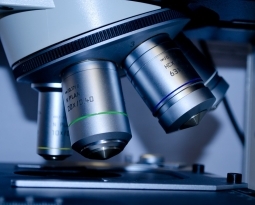Siemer Milling Company v. Commissioner (2019)
BACKGROUND
Siemer Milling Company (Siemer Milling) v. Commissioner of Internal Revenue, T.C. no 37 (2019)
Illinois based company Siemer Milling mills and sells wheat flour. In the tax years ending May 31, 2011 and 2012, it claimed R&D tax credit for seven projects, some spanning both years. The company claimed expenses involved in new product development projects. These included staff wages for projects such as flour heat treatment, wheat hybrids and whole wheat flour.
BASIC FACTS
To qualify for the R&D tax credit, a company must prove that its projects pass the four part test, which requires answers to the following questions:
- Is the work technological in nature? (i.e. does it rely on principles of hard science: chemistry, engineering or computer science?)
- Is there a permitted purpose? (i.e. is there intent to develop a new or improved product or process?)
- Is there elimination of uncertainty? (i.e. at the offset of this project, was there uncertainty about its design, capability or method?)
- Is there a process of experimentation? (i.e. did the company systematically trial and experiment?)
Siemer Milling provided no evidence of a methodical experimentation. The company recited the steps it took in the technical process, but did not back this up with documentation.
COURT’S DECISION
The court ruled that Siemer Milling was disallowed $235,000 it had claimed. This was because it failed to retain and provide adequate documentation to demonstrate that its activities met the IRS’ four part test. The court paid particular attention to the experimentation aspect, and found that the company did not have a “methodical plan involving a series of trials to test a hypothesis, analyze the data, refine the hypothesis, and retest the hypothesis so that it constitutes experimentation in the scientific sense”. The court also disallowed credit because it could not see evidence of all the work being ‘technological in nature’.
LEARNINGS
This case is a reminder of being thorough, both in undertaking the R&D activities, and documenting them. The court’s focus on the experimentation aspect of the four past test shows the importance of documenting the testing method (i.e. steps taken, failed iterations, changes made, variables monitored).
But, there are some positive takeaways from the case. The court disagreed with the IRS on some points and found that:
- “The development or improvement of a business component can span more than one tax year”.
- Project could have the same uncertainties in both years because “not all uncertainties are neatly resolved within the confines of a single taxable year”.
- The company was not required to employ staff with degrees in hard sciences, or staff with hard science titles (i.e. engineers), in order to be utilizing hard sciences in its projects.
Click here to read the full case.
Want to know more about claiming R&D tax credits? Connect with our R&D tax experts today.
Who We Are:
Swanson Reed is one of the U.S.’s largest Specialist R&D tax advisory firms, offering tax credibility assessments, claim preparation, and advisory services. We manage all facets of the R&D tax credit program, from claim preparation & audit compliance to claim disputes.
Swanson Reed regularly hosts free webinars and provides free IRS CE and CPE credits for CPAs. For more information please visit us at www.swansonreed.com/webinars or contact your usual Swanson Reed representative.

















